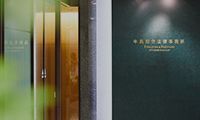The Japanese Government is taking serious new measures to eliminate excessive work by employees in Japan, and employers need to be aware.
Under the administrative standards for recognizing “death resulting from excessive work” (“karoshi”) issued by the Ministry of Health, Labour and Welfare (“MHLW”), if an employee dies from a stroke, heart attack etc., then his/her death is likely to be considered karoshi, if, from the time when the symptoms of the disease first appeared, the employee worked 1) more than 100 hours of overtime[1] during the prior month, or 2) more than an average of 80 hours of overtime per month during the prior two to six months.
Despite these standards, the number of claims for workers’ accidents compensation related to karoshi including “suicide due to excessive work” (“karojisatsu”) has been increasing every year.
Subsequently, the MHLW took the following measures for eliminating excessive work:
- 1.
- The labor standards inspection offices have reduced the threshold for selectively carrying out on-site inspection of workplaces from 100 hours of overtime work by employees in a month to 80 hours. This means that any workplace which has even one employee work more than 80 hours of overtime in a month will be more easily subject to on-site inspection, although any workplace can be subject to such inspections regardless.
- Due to this change, it is expected that approximately 20,000 workplaces will be targeted for on-site inspection, which is double the previous number.
2.
- On April 1, 2016, the MHLW set up a special team for eliminating excessive work, and placed officers specializing in supervising excessive work at all 47 labor bureaus in Japan. Previously, this special team was only at the Tokyo and Osaka Labor Bureaus, so supervision of excessive work has been strengthened on a nation-wide scale.
Finally, since last year, the labor standards inspection offices have started to monitor information on the internet, such as word-of-mouth communication, message boards, SNSs, and blogs. So, on-site inspection can be triggered even by casual comments on the internet written by employees, retirees or others.
Therefore, employers in Japan are strongly advised to fully comply with the overtime regulations under the Labor Standards Act of Japan and make an effort to reduce excessive overtime work.
For details about the regulations and recent trends concerning overtime work in Japan, and the risks which may arise from long work hours, please refer to “Serious Risks behind Loose Management of Work Hours in Japan— Unpaid overtime work and compensation for deaths/disorders from overwork —”
(http://www.ushijima-law.gr.jp/articles/serious-risks-behind-loose-management-of-work-hours-in-japan[2]).
[1] The hours of overtime include those of work on vacation days. The same shall apply hereinafter.
[2] In 2015 it was decided that the interim measures that tolerantly treat small or medium sized enterprises in applying the newly introduced additional 25% premium for overtime work above sixty hours per month (referred to in this memorandum) will be abolished as from April 1, 2019.


